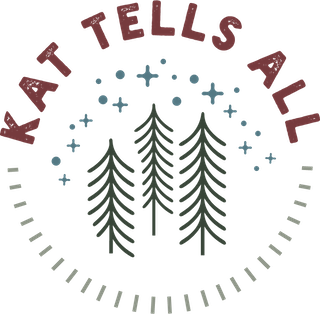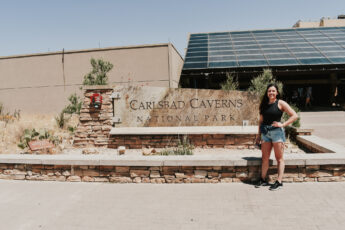
Your Guide to White Sands National Park
I have never seen anything quite like White Sands National Park. The closest thing I can think to compare it to is the moon (not that I’ve been there). Layers and layers of dunes roll with the San Andres Mountains in the West and Lincoln National forest in the East.
After spending at day there, I have put together a Guide to White Sands National Park including: Some Backstory, What to Bring, When to Go, What to Expect, and What We Did!
White Sands National Park is the world’s largest Gypsum Salt Dune (It’s actually not sand, and no, you can’t eat it!) It’s located in the Tularosa Basin and spans 275 square miles. Part of it is preserved for the National Park and part is used for Military missile purposes.
Gypsum isn’t often found as sand because it dissolves with contact to water. Due to the unique climate of the basin, the weather patterns preserve the park.
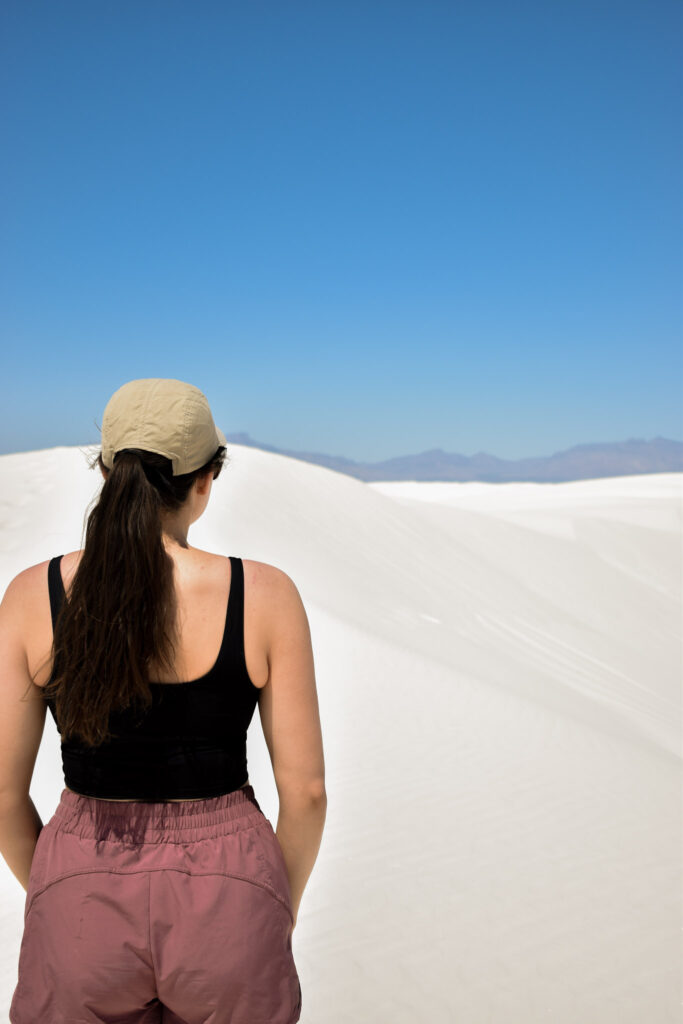
Some Backstory
White Sands National Park is actually one of the youngest National Parks. It was originally established as a National Monument in 1933 by Theodore Roosevelt, and then designated a National Park in 2019 by Donald Trump.
(The difference between a National Park and National Monument is National Parks are protected due to their scenic and recreational value, while National Monuments are protected because they are or contain places or objects of historic value)
What to Bring
- TONS OF WATER- This is not a drill! Pack more water per person than you think you’ll need. You can buy and fill water bottles at the gift shop, but once you’re in the park there is nowhere to get or purchase water.
- Sunscreen- Not only is the UV Index high, but the light reflects off the sand. Bring plenty of sunscreen and plan to reapply throughout the day.
- Hat- Between the sun and the heat, you’re going to want to protect the top of your head. The more protection you have from the sun, the longer you can enjoy the incredible landscape.
- Sunglasses- When I took my sunglasses off even for a short time I couldn’t believe how bright it was.
- Sandals or shoes that you don’t mind having sand in forever- The tennis shoes that I wore for the day had sand in every nook and cranny. I would not recommend wearing shoes that you love.
- Sled and wax- Sledding down the dunes is so much fun! I would recommend picking up a sled and some wax beforehand. The gift shop does sell them for $30, but if you want to find one more reasonably priced, consider stopping someplace beforehand.
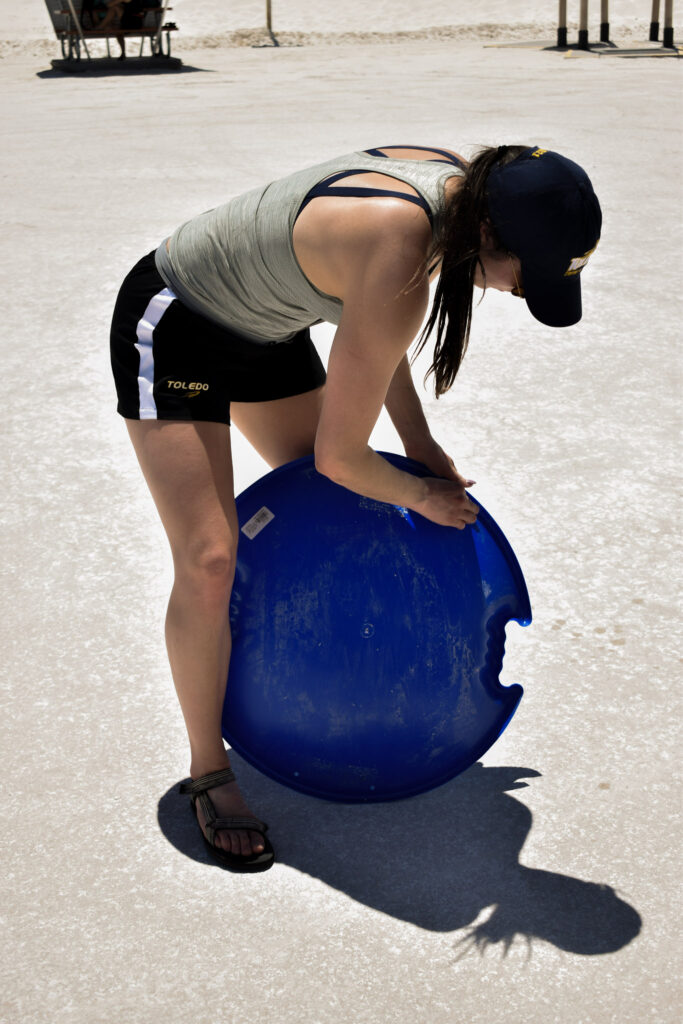
When to Go
We went in May and it was HOT. I have heard that as it progresses further and further into the summer the temperature rises and it becomes less pleasant to visit. The locals have suggested the most ideal time to visit being in the spring or fall.
What to Expect
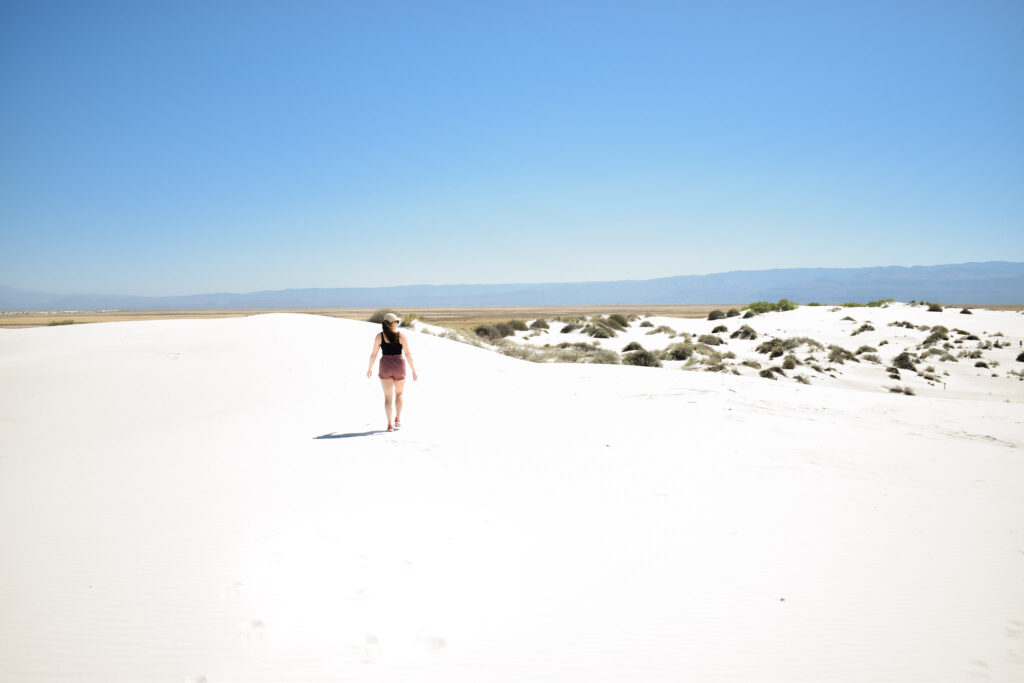
Multiple Trails
White Sands National Park has multiple trails that vary in difficulty. While we were there we hiked Dune Life Trail and the Backcountry Camping Trail.
- Dune Life Nature Trail is a one-mile easy-moderate level trail. There are a few light hills, but for the most part the trail is quite easy to navigate. Because the trail is near the edge of the dunes there was more vegetation and wildlife in this area.
- Backcountry Camping Trail is two-mile moderate level trail. This trail had slightly more elevation change. I found the most challenging part of this hike to be keeping my bearings. Being surrounded by miles of white dunes can be deceiving. Each time you make it to a trail marker be sure scout out the next one prior to walking.
The Park also hosts a fully accessible intervene boardwalk for those not committed to hiking. The Playa Trail is a half-mile loop with informative signs about the landscape, history and wildlife. Alkali Flat is the most challenging trail at White Sands National Park. This five-mile loop is strenuous and not for the faint at heart (or ill prepared).
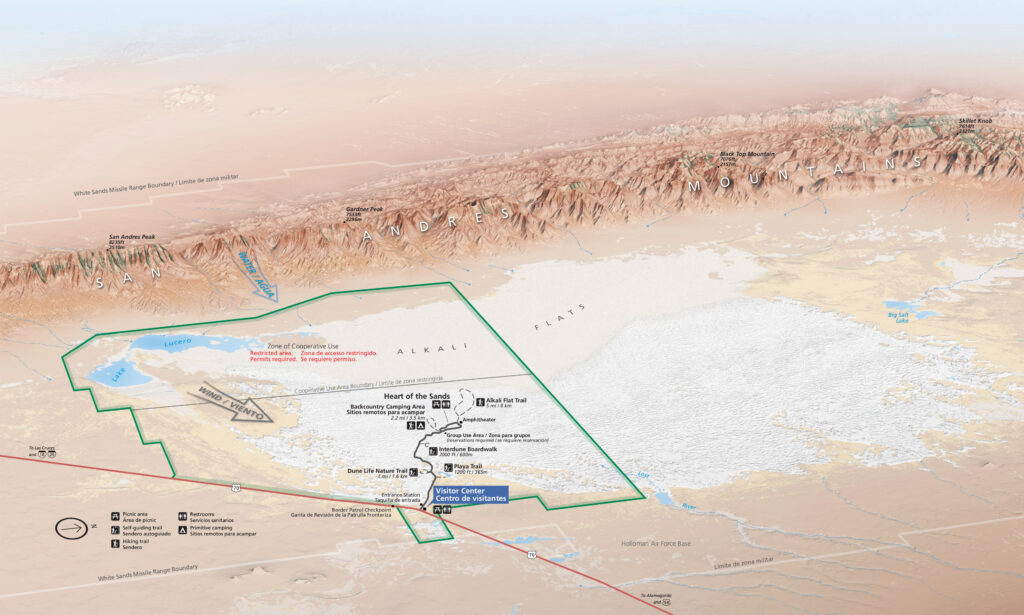
Backcountry Camping
The National Park is supposed to be beautiful at night due to light reflecting off the sand and lack of interference from any major cities. There are several backcountry campsites on the Backcountry Camping Trail (10 in total I believe).
Meal Areas
There are tons of these picnic table shelters scattered throughout the park. Being that there is no natural shade from the sun, these are the perfect way to escape the sun and recoup!
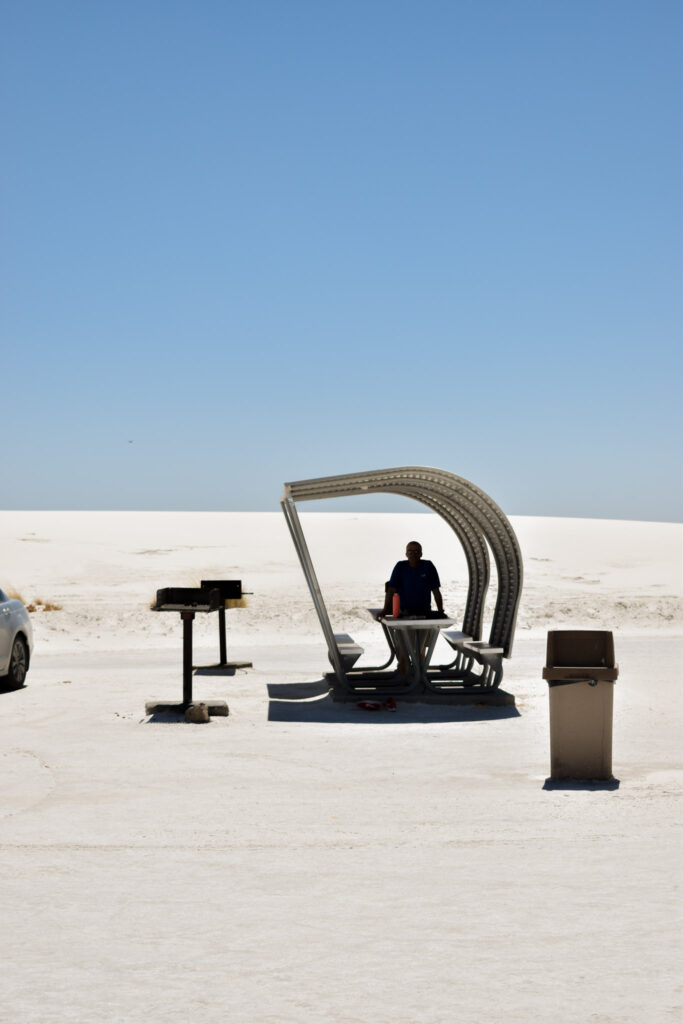
What We Did
11:00am- We arrived at White Sands National Park Visitors Center. We took the opportunity to fill our water bottles and check out the Park map.
11:15am- We drove to the Dune Life Nature Trail Trailhead and did the one-mile loop which took us about 45 minutes.
12:00pm- We drove further Into the park and settled at one of the sheltered picnic table to eat our bagged lunch. We spent about 45 minutes enjoying the shade and taking a few photos.
12:45pm- We drove to the Backcountry Camping Trailhead and hiked the two-mile loop taking about 90 minutes.
2:15pm- We finished our hike and went back to the car to grab our sled. We spend about 15 minutes sledding down the dune near the parking lot.
2:30pm- We stopped at the Visitors Center/Gift Shop to fill waters and grab a few souvenirs.
2:45pm- We hit the road and headed on our next adventure to Carlsbad Caverns National Park!
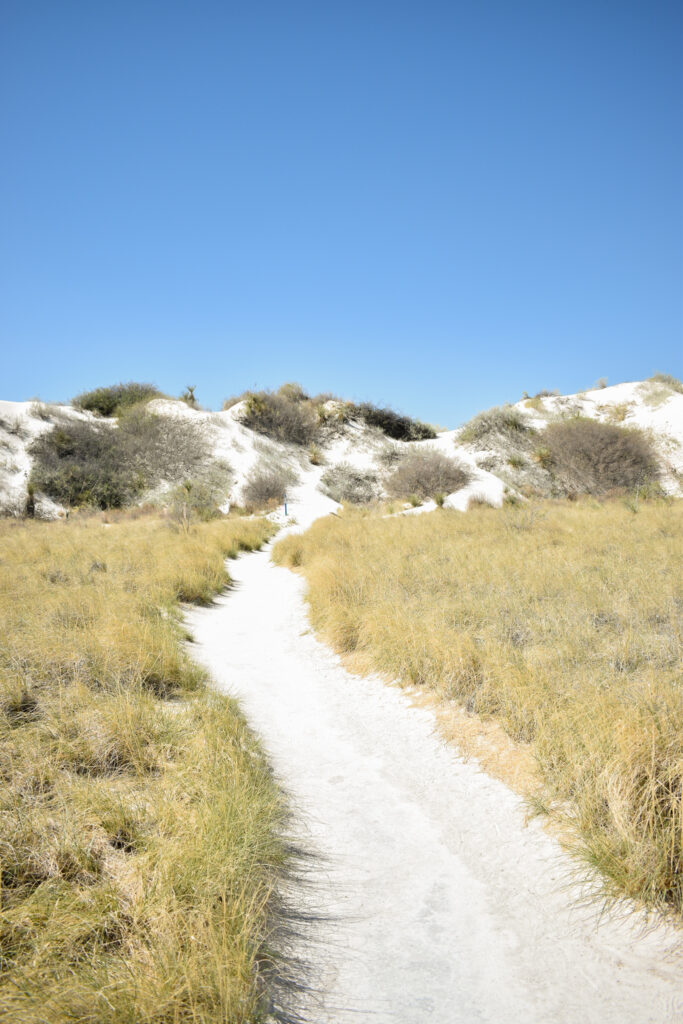
Love National Parks? Check out related posts!
Hiking in Rocky Mountain National Park and Your Guide to Voyageurs National Park!
For more information check out the National Parks Website!
